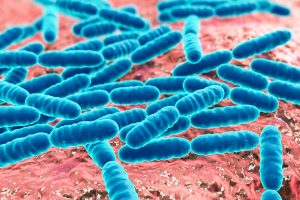Characteristics of microbes in industrial-microbiology
Microorganisms which are used for industrial production must meet certain requirements including those to be discussed below. It is important that these characteristics be borne in mind when considering the candidacy of any microorganism as an input in an industrial process.

- The organism must be able to grow in a simple medium and should preferably not require growth factors (i.e. pre-formed vitamins, nucleotides, and acids) outside those which may be present in the industrial medium in which it is grown. It is obvious that extraneous additional growth factors may increase the cost of the fermentation and hence that of the finished product.
- The organism should be able to grow vigorously and rapidly in the medium in use. A slow growing organism no matter how efficient it is, in terms of the production of the target material, could be a liability. In the first place the slow rate of growth exposes it, in comparison to other equally effective producers which are faster growers, to a greater risk of contamination. Second, the rate of the turnover of the production of the desired material is lower in a slower growing organism and hence capital and personnel are tied up for longer periods, with consequent lower profits.
- Not only should the organism grow rapidly, but it should also produce the desired materials, whether they be cells or metabolic products, in as short a time as possible, for reasons given above.
- Its end products should not include toxic and other undesirable materials, especially if these end products are for internal consumption.
- The organism should have a reasonable genetic, and hence physiological stability. An organism which mutates easily is an expensive risk. It could produce undesired products if a mutation occurred unobserved. The result could be reduced yield of the expected material, production of an entirely different product or indeed a toxic material. None of these situations is a help towards achieving the goal of the industry, which is the maximization of profits through the production of goods with predictable properties to which the consumer is accustomed.
- The organism should lend itself to a suitable method of product harvest at the end of the fermentation. If for example a yeast and a bacterium were equally suitable for manufacturing a certain product, it would be better to use the yeast if the most appropriate recovery method was centrifugation. This is because while the bacterial diameter is approximately 1µ, yeasts are approximately 5µ. Assuming their densities are the same, yeasts would sediment 25 times more rapidly than bacteria. The faster sedimentation would result in less expenditure in terms of power, personnel supervision etc which could translate to higher profit.
- Wherever possible, organisms which have physiological requirements which protect them against competition from contaminants should be used. An organism with optimum productivity at high temperatures, low pH values or which is able to elaborate agents inhibitory to competitors has a decided advantage over others. Thus a thermophilic efficient producer would be preferred to a mesophilic one.
- The organism should be reasonably resistant to predators such as Bdellovibrio spp or bacteriophages. It should therefore be part of the fundamental research of an industrial establishment using a phage-susceptible organism to attempt to produce phage-resistant but high yielding strains of the organism.
- Where practicable the organism should not be too highly demanding of oxygen as aeration (through greater power demand for agitation of the fermentor impellers, forced air injection etc) contributes about 20% of the cost of the finished product.
- Lastly, the organism should be fairly easily amenable to genetic manipulation to enable the establishment of strains with more acceptable properties.
